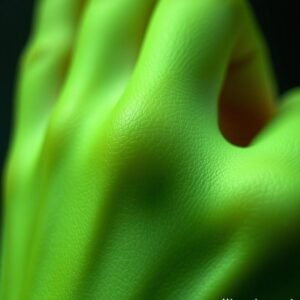The Codex Seraphinianus: Visionary Masterpiece or Elaborate Hoax?

Codex Seraphinianus: Art or Hoax? Decoding the Mystery
What elevates a seemingly nonsensical book, composed in an incomprehensible language, to the status of a work of art worthy of profound contemplation? It is an encyclopedia of a world yet to be realized, meticulously rendered with details that pique our curiosity more than they resolve our questions. Why are we so captivated by this apparent absurdity? In this episode, we embark on a journey into the heart of the Codex Seraphinianus, to uncover the secret behind this peculiar work’s ability to inspire us, even in the absence of comprehension.
Before we delve into the enchanting pages of the codex, please share in the comments what aspects of this strange world intrigue you most. And to join us on this journey of unraveling its mysteries, subscribe to the channel.
Luigi Serafini: The Creator of a World
But who is Luigi Serafini, the creative mind behind this bizarre masterpiece? Born in Rome in 1949, he commenced his academic pursuits with the study of architecture. However, his passion soon transcended the confines of physical construction, leading him to explore the realms of photography and visual art. In the late 1970s, Serafini embarked on a unique project, one that aimed not to design a building, but to construct an entire world, embodied in the Codex Seraphinianus.
The codex was not merely a fleeting artistic endeavor, but a bold exploration of the boundaries between understanding and meaninglessness. Serafini himself described it as an attempt to emulate the feeling of a young child confronted with a book they cannot decipher, an experience aimed at mimicking the inability to comprehend written language. But is that truly the extent of its purpose? Or is it merely a cleverly crafted artistic deception?
In 2009, Serafini made a statement that further perplexed observers, asserting that the language used in the codex holds no hidden meaning or secret connotations, and that it is specifically designed to create a sense of ambiguity and strangeness. Could this massive book, with all its intricate details and complex illustrations, be nothing more than a brilliant optical illusion? Or is the artist concealing something far deeper? Serafini, who has designed album covers for prominent musicians, is acutely aware of the power of imagery and music to evoke emotions and stimulate the imagination. Perhaps he sought to create a similar experience through writing.
The Enigmatic Language
But what about the language itself? Those strange symbols that fill the pages of the codex, resembling writing but defying definition. A unique alphabet, unlike any other, that piques curiosity while resisting comprehension. The codex consists of approximately 360 pages, divided into 11 chapters, each a window into a different aspect of this imagined world – from botany and zoology to physics and clothing.
For years, linguists and cryptographers have sought to unlock the secrets of this enigmatic text. However, their efforts have been met with frustration. Is it a designed language, an artificial language, or simply a random sequence of symbols? Statistical analysis of character patterns reveals captivating details, exhibiting properties similar to natural languages, suggesting the existence of a hidden linguistic structure, perhaps the key to the entire puzzle.
But what if Serafini is correct? What if the codex is nothing more than a tool for awakening wonder, for igniting a sense of strangeness? A captivating sensory experience, mimicking the curiosity of a young child confronted with a book they cannot decipher. Is this not the essence of the genius within? Transforming the incomprehensible into a timeless work of art.
A Glimpse into the World
Let us immerse ourselves in this unique world, where the strangest creatures, plants, and phenomena imaginable are embodied. Imagine birds adorned with foliage instead of feathers, and fish that breathe the fresh air, skillfully climbing trees. A world where the boundaries between the realms of nature blur, where living beings merge in exquisite combinations that captivate the mind. Behold those wondrous plants, trees that bear elegant tableware, and flowers that overflow with vibrant colored liquids. A world where plants transcend their biological function, transforming into tools and colors in a magical cosmic painting. And witness those bizarre rituals, such as the bathing ritual that uses complex machines to pamper and cleanse individuals. An imaginary society that invents unconventional solutions to meet its basic needs. Then, there are those perplexing machines and devices, some suggesting use in agriculture or construction, while others remain a mystery with no apparent function. Strange cities and architectural structures, buildings with wild shapes and suspension bridges connecting floating mountains in the sky. Strange foods and dishes, prepared from unfamiliar materials or presented in innovative ways. Strange fashions and clothing, made from plant or animal materials, or designed for unknown purposes. A world…
The Psychology of the Unknown
But why does a book like this generate so much interest? Why are we specifically drawn to what we cannot understand? Part of the answer lies deep within the human psyche, in that inherent desire to explore the unknown. It is an echo of what is known as the Dunning-Kruger effect, where some tend to overestimate their understanding, leading them to embrace unfamiliar interpretations. We are eager to find patterns, even in the heart of chaos. Pareidolia, that wondrous phenomenon that makes us glimpse familiar faces in cloud formations, urges us to extract meaning from Serafini’s enigmatic symbols. Studies have shown that individuals who tend towards order and organization are more likely to find hidden meanings in randomness. Conversely, those who suffer from anxiety about uncertainty often seek complex explanations for events. And we cannot overlook the role of confirmation bias, as we unconsciously tend to select information that supports our established beliefs. Carl Jung, with his insightful vision, spoke of the collective unconscious, those shared archetypal symbols that profoundly influence our understanding of the world. Solving puzzles activates reward areas in the brain, giving us a sense of satisfaction and accomplishment.
Influences and Inspirations
But did this strange encyclopedia spring from nothing? Or was Serafini alone in his feverish quest to tear down the veil of reality? Of course not. The roots of the Codex Seraphinianus extend deep into the fertile soil of fantasy. Imagine the surrealist paintings of Max Ernst and René Magritte, where dreams intertwine with nightmares in a captivating visual dance. Here, the world of Serafini echoes, a world that boldly defies logic and invites us to question deeply. Then there is the Dada movement, that resounding cry in the face of rigid rationality. Dada, born from the ashes of war, sought fiercely to dismantle everything, even art itself. Do you not see the clear similarity in the spirit of rebellion and absurdity that it shares with the codex? And we cannot ignore the Voynich Manuscript, that ancient, unsolved puzzle that lurks in the shadows. A book written in an unknown language, raising the same fundamental questions about knowledge and encoding that the Codex Seraphinianus raises. Are they both merely fleeting illusions, or a secret window into hidden worlds? And beyond the bustling modernity, we find captivating allusions from the distant past. The Hortus Deliciarum of Herrad of Landsberg, an illustrated encyclopedia from the 12th century, whispers to us of the human desire to compile knowledge, even if it is strange and unfamiliar. And let us not forget M.C. Escher, the master of optical illusions par excellence, who challenged the laws of geometry and logic with brilliance. His images of impossible formations find their deep resonance in the world of Serafini, where everything is possible, and nothing is as it appears. Finally, the words of Jorge Luis Borges, the magician of infinite libraries and parallel worlds, resonate with a captivating echo in the corridors of the codex. Borges taught us that imagination is our most powerful tool, and that books can be magical portals to other realities.
The Codex in Popular Culture
But the magic of the Codex Seraphinianus did not stop at the boundaries of its drawn pages. Rather, it transcended that to reach prestigious galleries, where it manifested as a captivating work of art at the Venice Biennale, confirming beyond any doubt that the horizons of art are far broader than we imagine. And across the vast internet, the contagion of curiosity quickly spread, forming entire virtual communities, whose sole concern was to decipher this perplexing visual puzzle. Reddit forums and other specialized sites embraced enthusiasts who exchanged theories, and delved into the analysis of the complex drawings with their amazing details, in a desperate attempt to translate what seems untranslatable. The stream of inspiration did not stop at the boundaries of academic analysis and interpretation. Artists and designers found in the codex a rich source for their creative works, creating digital drawings and unique sculptures that embody the strange and mysterious worlds of Serafini. And even literature and video games did not escape the codex’s allure, with subtle references appearing here and there, reflecting this widespread cultural diffusion. Limited editions of the codex, supervised by Luigi Serafini himself, quickly became highly valued by collectors of rare books and lovers of strange arts.
The Enduring Mystery
But does a deeper secret lie hidden within the folds of this book? A question that echoes through years of contemplation and in-depth analysis. Despite Serafini’s categorical denial of any hidden meaning, insisting that it is merely a quest to revive a child’s feeling of reading, that did not deter researchers from attempting to break the code of the mysterious codex. In 2009, a research team claimed to have discovered a hidden linguistic pattern, indicating the existence of real language rules, but they were unable to decipher the words. So, is it a real language in every sense of the word, or just a brilliant simulation of writing? A question that imposes itself urgently. Perhaps the book is merely a satirical imitation of serious scientific texts, aimed at deceiving the reader and deluding them into believing that there is a deep meaning where there is only creative chaos. The Italian philosopher Umberto Eco was inspired by the magic of the codex in his novel Foucault’s Pendulum, where the threads of complex conspiracies and the feverish search for hidden meaning intertwine. Does the codex reflect our eternal obsession with searching for patterns and meanings, even in the midst of overwhelming chaos? The linguist William Shearer believes that the illustrations that adorn the pages of the codex closely resemble spontaneous









